This tribute to Dianne Pilgrim was composed by Ellen Lupton.
The world of design has lost a great friend with the passing of Dianne Pilgrim (1941–2019), director emeritus of Cooper Hewitt, Smithsonian Design Museum. When Pilgrim joined the museum as director in 1988, she brought her deep scholarly knowledge of American design as well as her personal passion and advocacy for universal design. Diagnosed with multiple sclerosis at age thirty-eight, Pilgrim used a cane, Canadian crutches, and a wheelchair over the course of her life. She led an ambitious renovation of the Cooper Hewitt campus with James Stewart Polshek and Polshek Partnership Architects that showed the world how a cherished historic property could become a fully accessible public place. Cooper Hewitt trustee Agnes Bourne, who worked closely with Pilgrim on the renovation and other projects, recalls, “When the Smithsonian suggested that we didn’t need a design museum, Dianne got busy and raised the funds to not only keep it but to make it even better.”
When Cooper Hewitt unveiled the renovated Carnegie Mansion and adjoining townhouses and garden in 1997, the museum celebrated access along all fronts. Not only could every visitor enter the front door, but the entire collection became available to the public. The inaugural exhibition, designed by Stephen Doyle, depicted the museum as an open book overflowing with riches that anyone could view. Doyle recalls, “Dianne promoted the idea of the museum as a resource library, a repository of visual knowledge, a seed bank, even.” Facilities such as the Drue Heinz Study Center for Drawings & Prints welcome scholars, students, researchers, and members of the public to view original works by appointment. Today, Cooper Hewitt’s digitized online collection offers instant access around the globe, building on Pilgrim’s expansive vision of the museum as a resource. Caroline Baumann, Director of Cooper Hewitt since 2013, says, “Dianne powerfully advocated for accessibility and universal design, and she transformed Cooper Hewitt into an exemplar of historic buildings made accessible to all. She also established the National Design Awards, one of our most important and long-running programs. Her vision for the museum continues in our work today, as we achieve our strategic goal of accessibility and inclusion.”
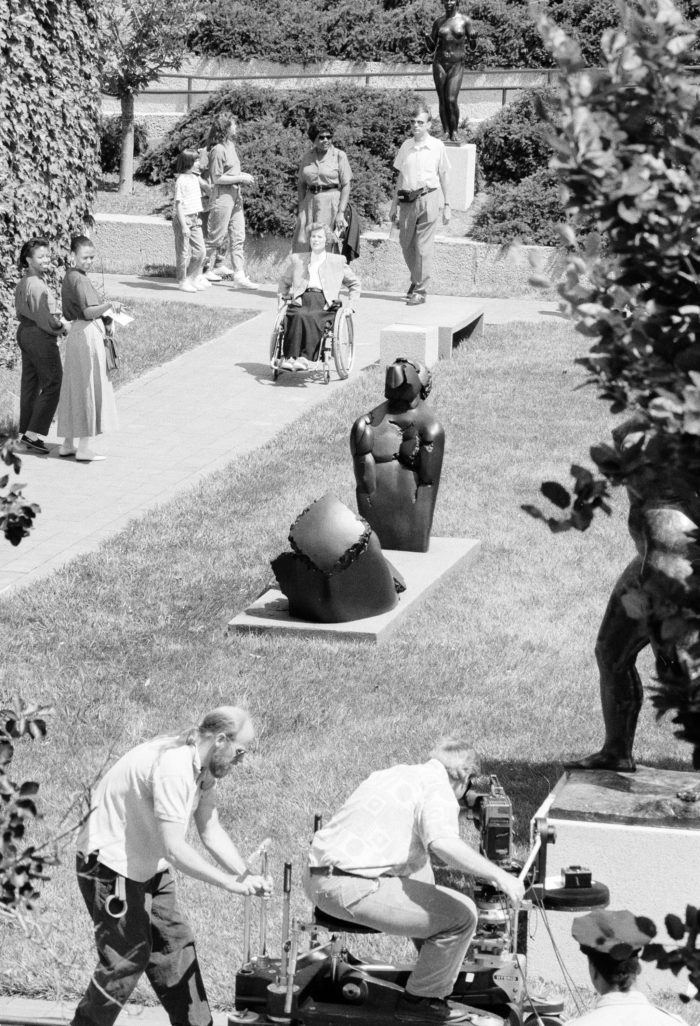
The Office of Public Affairs in 1991 produced a new television public-service announcement to encourage visitors with physical disabilities to take advantage of the Smithsonian’s facilities. The PSA featured Dianne Pilgrim, seen here during the June filming in the Hirshhorn Sculpture Garden.
Pilgrim was especially interested in the history of design in the United States. In 1979, she co-authored The American Renaissance 1876-1917 while serving as curator of decorative arts at the Brooklyn Museum; this seminal book explores the artistic passions and symbolic aspirations that gave rise to buildings like the Carnegie Mansion. Pilgrim’s loving respect for the mansion’s heritage guided her through the renovation project.
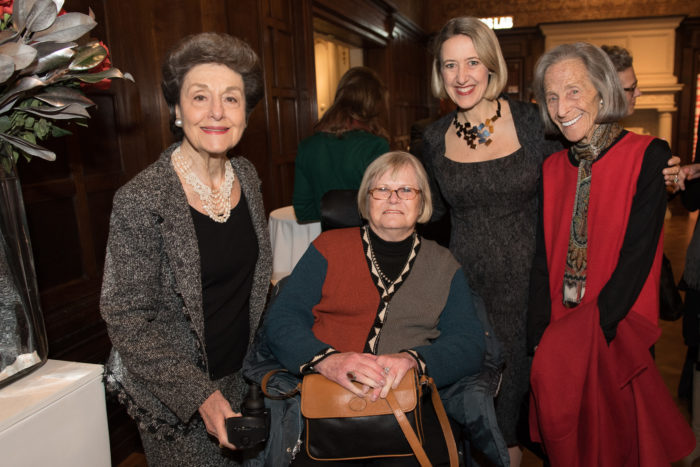
Nancy Marks, Dianne Pilgrim, Caroline Baumann, and Barbara Mandel at the opening of the newly renovated Cooper Hewitt, Smithsonian Design Museum housed in the Carnegie mansion in New York City on December 12, 2014. Photo by Angela Jimenez.
In 1986, she co-authored The Machine Age in America, 1918–1941, also for the Brooklyn Museum. This stunning book and exhibition explored the consumer-driven design movement that revolutionized the American landscape with streamlined curves, setback buildings, and modular kitchens. Pilgrim studied designers who were little known at the time (and are much beloved to Cooper Hewitt), including Donald Deskey, Illonka Karasz, and Walter Dorwin Teague. Describing America in the 1930s, she wrote, “We were eager for the future. Despite the doomsayers most people felt that the machine could not help but make the world a better place. Most fascinating is the fact that the actual future was developing where anyone could see it.” Under Pilgrim’s direction, Cooper Hewitt organized original exhibitions throughout the 1990s celebrating such American design pioneers as Deskey, Henry Dreyfuss, Russel Wright, and Charles and Ray Eames. Today, the books published with these exhibitions remain definitive works of scholarship. Donald Albrecht, Curator of Special Projects at Cooper Hewitt from 1996 through 2003, recalls, “Dianne stayed true to a mission—a commitment to American design, both historical and contemporary, and the value its practitioners placed on improving people’s everyday lives through the places we live in and the things we use.”
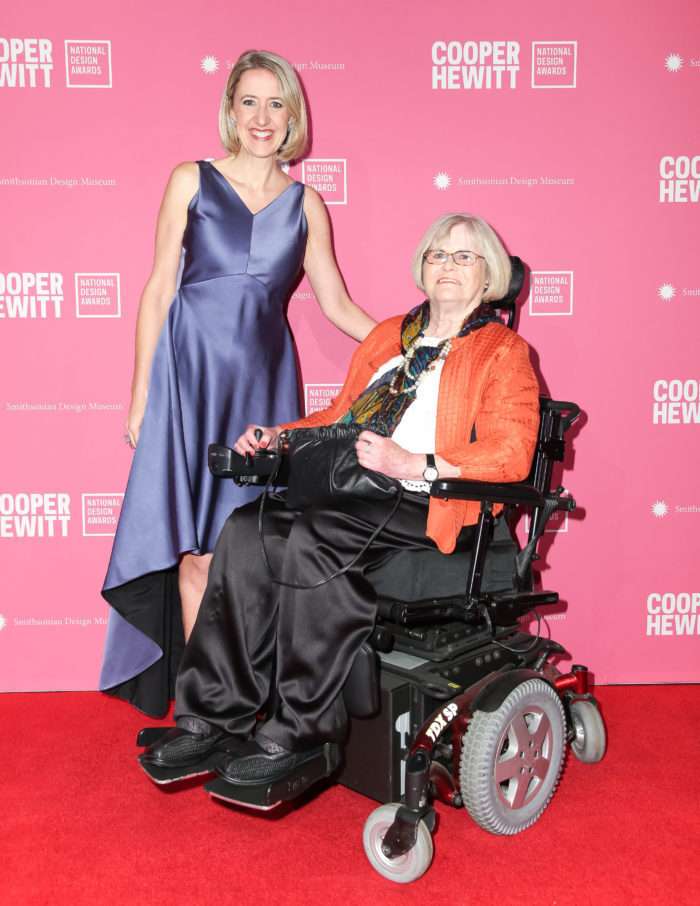
Caroline Baumann and Dianne Pilgrim in attendance at the 2014 National Design Awards Gala.
Although Pilgrim was a brilliant historian, she kept her eye on the future. According to Susan Yelavich, who served as Assistant Director for Public Programs, 1994–2002, “Cooper Hewitt really took its place on the national stage when Dianne inaugurated the Design Triennial exhibition series.” Today, these projects continue to illuminate design’s role in preserving the planet, building a just society, and celebrating human creativity. Recent Cooper Hewitt exhibitions such as Access + Ability (2017–2018) and The Senses: Design Beyond Vision (2018) reflect Pilgrim’s enduring influence on how design shapes the human condition. Dianne’s scholarship on the American machine age and her commitment to universal design continue to inspire curators as we explore technology, the body, and social life.
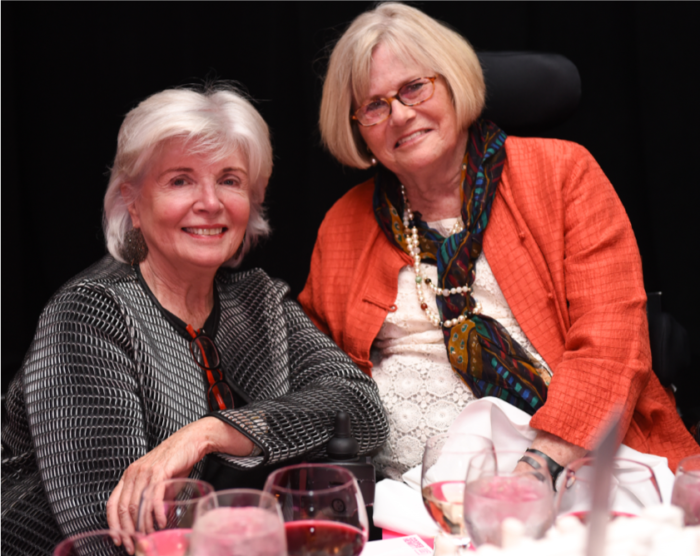
Kay Allaire and Dianne Pilgrim.
Pilgrim built the museum’s education program into a national endeavor. According to Dorothy Dunn, director of education from 1989 through 2005, “She brought DESIGN and designers to the foreground of Cooper Hewitt’s mission. Under her leadership, the museum presented design as a verb, engaging youth and school audiences in the design process, often working directly with professional designers.” When Pilgrim left Cooper Hewitt in 2000, the museum had truly come of age and was ready to address the new millennium.
ABOUT THE AUTHOR
Ellen Lupton was appointed by Dianne Pilgrim in 1992 as Curator of Contemporary Design.
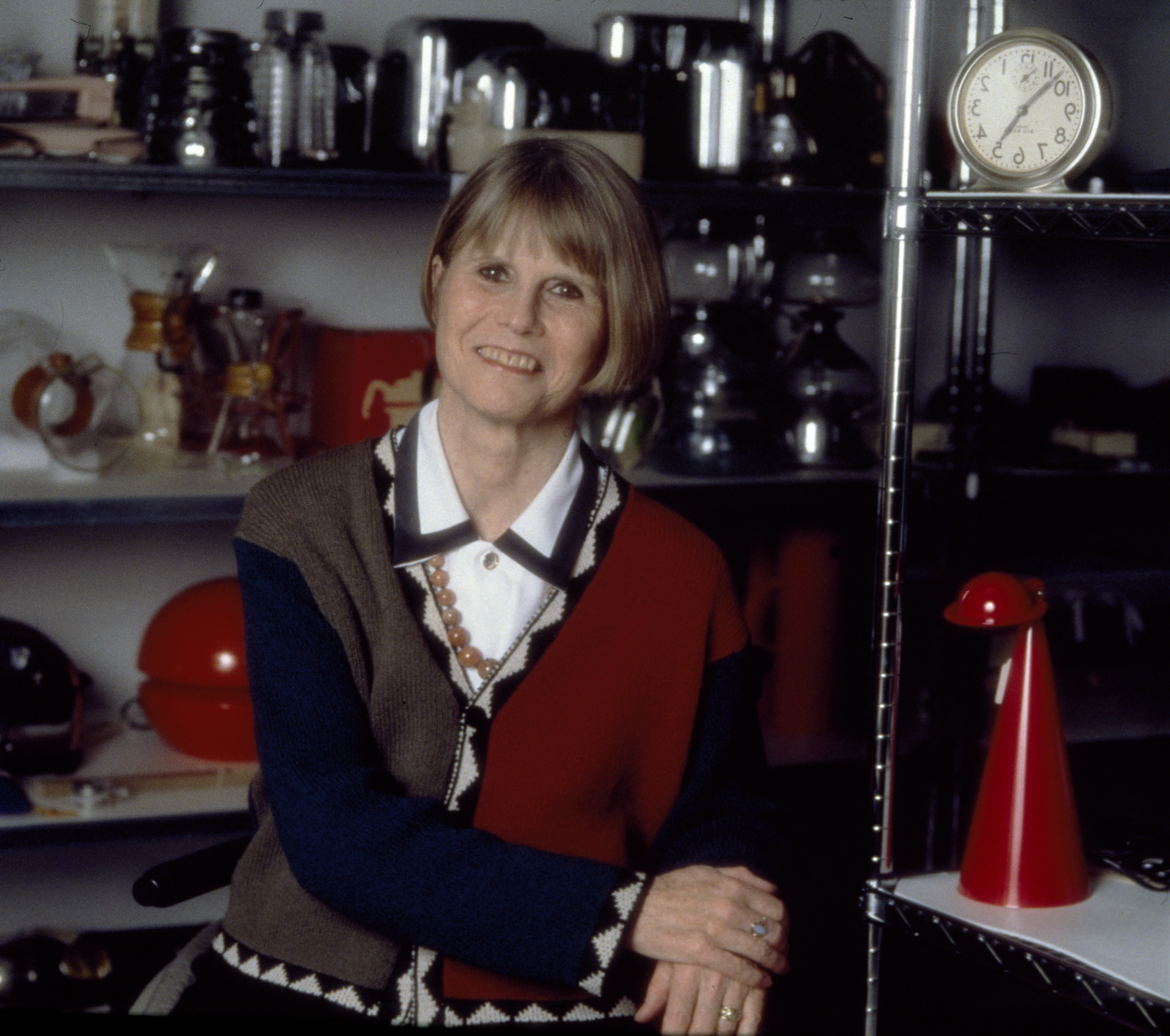
One thought on “Remembering Dianne Pilgrim”
Kelly Schlegel on June 1, 2020 at 1:01 pm
I am sorry to hear of Dianne’s death. In 1998, I wrote her a letter asking as a designer/project manager for retail on how to transfer my skills to the art museum field and she was kind enough to respond with ” I can attribute my success I’ve had to my commitment to study, research, teaching and work in as many aspects of the fields of decorative arts and design as I could.” Wise words and a kindness that prompted me to follow her advice.